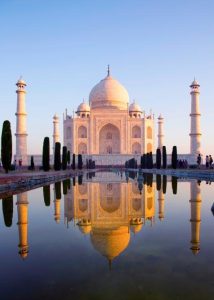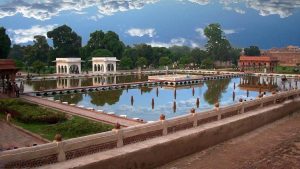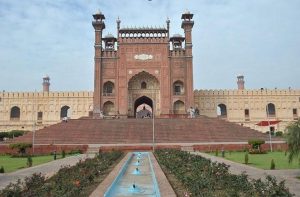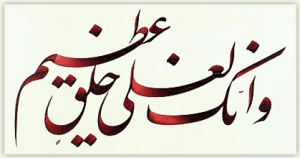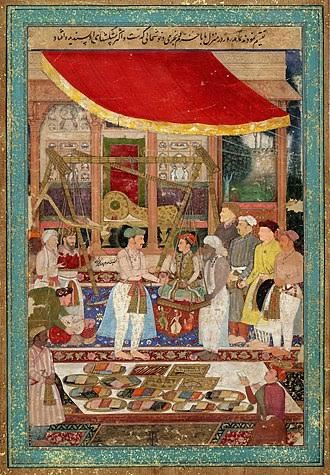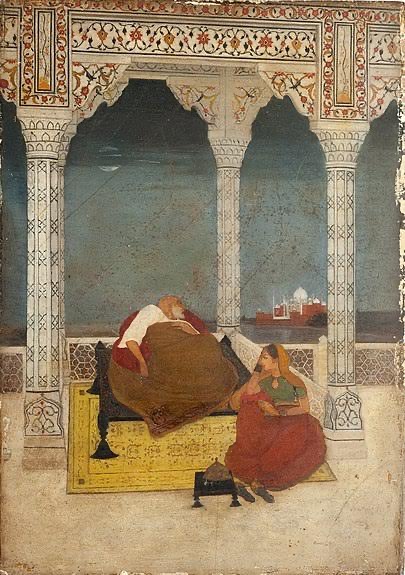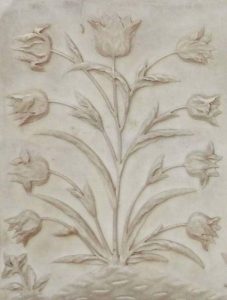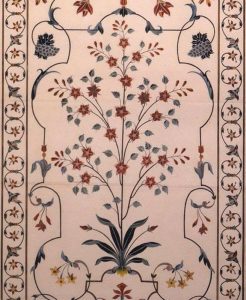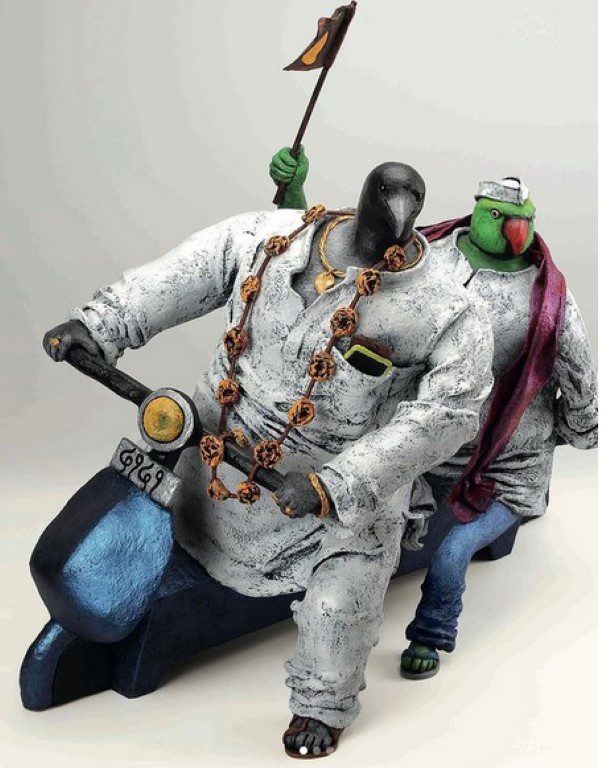Prachi Sahasrabudhe
The impact of South Asian culture on Islamic art is an intriguing topic that demonstrates the dynamic trade and interplay of creative traditions across various geographic regions. South Asia, with its varied cultural richness and rich history, has had a considerable influence on Islamic art, notably throughout the medieval period. This impact may be seen in many different parts of Islamic art, including architecture, calligraphy, miniature painting, and ornamental arts. The dynamic interaction and fusion of aesthetic traditions between Islamic and South Asian civilizations culminated in the development of one-of-a-kind and compelling works of art.
Differences in topography, climate, ethnicity, religion, and social background split South Asia into culturally diverse zones. The Mughal rule contributed to existing languages by introducing Arabic, Persian, and Turkish. In South Asian Terrain, religion was significant in people’s lives since society was largely rural and agrarian. Thus, many social norms in South Asia were based on old Hindu practices, which Islam absorbed rather than discarded.
The Arab Muslim trade interest in western India began in the seventh century, before Muhammad B. Qasim’s conquest of Sind (present-day Pakistan) in 712. Qasim killed enemy troops but spared merchants, artisans, and ordinary citizens. He also reached an agreement with the Brahmins – the Hindu priestly high caste, exempting them from the poll tax levied on non-Muslims and safeguarding their freedom to worship freely. Temples, such as the famed sun temple at Multan, were key money sources for the early Muslim monarchs. Small, Muslim-ruled enclaves were founded by Turks and Afghans in northwest India, while Arab and Persian merchants thrived along the western coast.
Much of the Indian subcontinent was controlled by Mughal power by the first half of the seventeenth century, yet subordinate and independent kingdoms flourished, particularly in the south. There was a strong sense of courtly formality and religious ritual in all these domains, as well as a strict code of suitable behavior on the part of both men and women. As the European presence in India rose, so did their need for Indian commodities and commercial rights, bringing even more cash to already wealthy Indian courts. The ruling class spent more and more money on luxury items and lavish lives, and at times, entire new capital cities were erected. All these circumstances contributed to increased sponsorship of the arts, including textiles, paintings, architecture, jewels, and weaponry, to suit kings’ and princes’ ceremonial needs.
The architectural traditions of the region are one of the most visible pieces of evidence of South Asian influence on Islamic art. South Asian architecture has been heavily influenced by trade routes that brought traders to Asia from all over the world. The Mughal Empire, which reigned over significant areas of South Asia from the 16th to the 19th centuries, introduced a distinct architectural style that combined Islamic and indigenous features. The Indian temple’s architecture was distinct from that of the mosque, which was open and large enough for communal prayer. Muslim construction effort was divided into three stages: demolition, material from demolished sites, and fabrication of own materials. As monarchs integrated local culture, provincial architectural styles emerged in the autonomous sultanates. The Mogul style, which began in the sixteenth century in the imperial capitals of Delhi, Agra, and Fatehpur Sikri, spread to the provinces as they grew. The special characteristics of these architectures were rooted in vernacular traditions.
At the start of the seventeenth century, Akbar’s liberal ideas towards religion predominated across most of north India, but as the century progressed, a feeling of conservatism crept in. With these new views and growing riches, kings from across India began to construct beautiful and often massive temples, mosques, and shrines to express their religious connections. With the primary architecture being mosques, the Mughal kings commissioned large structures that integrated Islamic themes such as arches, domes, and elaborate geometric designs, as well as Hindu, Persian, and Central Asian architectural traditions reflected in the sculpted decoration of the monuments. The walls were engraved with beautiful sculptures of Arabic calligraphy. Some even employed Mughal artwork on tiles. The exteriors of mosques were ornamented with sculpture that was not limited to abstract patterns. This blending of influences led to the creation of a distinct Indo-Islamic architectural aesthetic.
Taj Mahal, Agra, Uttar Pradesh, India,
The Taj Mahal is a mausoleum built in the 17th century by Mughal Emperor Shah Jahan for his wife. It is regarded as a Mughal architectural masterpiece that is significantly inspired by South Asian architectural traditions, notably in its use of elaborate inlay work, floral patterns, and the inclusion of Persian and Islamic design elements.
Shalimar Bagh / Shalimar Gardens, Lahore, Pakistan
https://www.tripadvisor.co.uk/
The Shalimar Gardens, which were established during the Mughal Empire, are famous for their breathtaking beauty. They are inspired by Persian garden architecture and include tiered lawns, water channels, fountains, and pavilions. The gardens combine South Asian, Persian, and Islamic aesthetics.
The Badshahi Mosque is an outstanding Mughal-era structure in Lahore, Pakistan. It is the fifth-largest mosque in the world and one of the most notable structures completed during Aurangzeb’s reign. It consists of a 170m square erected on the shore of the Ravi River, with prayer rooms that establish four Minarets echoing the miniature of each at each corner of the monument’s perimeter.
Corridors of Badshahi Mosques with views of the grand garden and staircase.
Image courtesy – Asian Historical Architecture.
Another area where South Asian culture has had a significant impact on Islamic art is calligraphy, the art of beautiful writing. South Asia has a long history of intricate and beautiful letters, including the Devanagari alphabet used for Sanskrit and Hindi, as well as numerous regional scripts. These numerous writing systems provided Islamic calligraphers with a wealth of inspiration and vice versa. South Asian letters’ stylized and ornamental traits fostered the creation of new calligraphic forms in Islamic art, notably in the Persian and Mughal traditions. The Nasta’liq script, which arose in 14th-century Persia and later became popular in Mughal India, exhibits strong influences from South Asian letters’ flowing curves and extravagant flourishes.
Nasta’liq is a popular script in Persian and Urdu calligraphy, reflecting a unique calligraphic style that merges Persian and South Asian aesthetic traditions, https://www.arabic-calligraphy.com/
The most striking effect of Muslims in India was on the visual arts. Earlier, non-figural art was favored, such as calligraphy and vegetal and geometric patterns. In the sixteenth century, two Persian masters, Mir Sayyid Ali, and Khwaja Abd al-Samad, established the Mughal School of painting. The Mughal School mostly consisted of Hindu painters who painted Persian and Indian history and narratives.
Emperor Jahangir weighs Prince Khurram by Manohar Das, 1610–15, from Jahangir’s copy of the Tuzk-e Jahangiri. The names of the main figures are noted on their clothes, and the artist shown at the bottom, British Museum.
Soon, Mughal miniature painting, a flourishing art form in South Asia and Persia played an important role in developing Islamic art. Mughal rulers were art lovers who founded royal ateliers that produced outstanding miniature paintings. These paintings addressed a variety of topics, including courtly situations, historical events, and literary depictions. The Mughal miniature painting style merged Persian and indigenous South Asian components, resulting in a distinct visual language distinguished by vivid colours, delicate brushwork, and great attention to detail. This distinct painting technique had a long-lasting influence on Islamic art, inspiring miniature painting traditions in Persia, the Ottoman Empire, and other regions of the Islamic world. Mughal miniature painting reached its pinnacle during Emperor Akbar’s reign in the 16th century and inspired miniature painting traditions not just inside the Mughal Empire but also in other Islamic regions. Parallel to the Mughal miniature Rajput style was almost entirely Hindu. The interaction of Mughal and Rajput Miniature styles was dependent on the interaction of Mughal and Rajput monarchs. The Bengal School of Painting resurrected these old methods of painting in the early twentieth century to make Indian painters conscious of their heritage.
The passing of Shah Jahan, Miniature painting by Abanindranath Tagore, 1902, Kolkata, India.
In addition to architecture, calligraphy, and miniature painting, South Asian culture has affected the ornamental arts of the Islamic world, such as pottery, textiles, metalwork, and woodwork. The use of elaborate floral themes, which have a long history in South Asian art, is one famous example. These motifs, distinguished by their naturalistic shapes and symmetrical patterns, were used in a variety of Islamic art and architecture. The complex and ornate designs of Islamic artifacts show the influence of South Asian flower patterns. Intricate floral designs inspired by South Asian art’s rich legacy are frequently integrated into these products, adding beauty and elegance. The use of floral motifs in Mughal carpets and metalwork, for example, indicates the impact of South Asian creative sensibility.
Floral decorations of the cenotaph of Mumtaz Mahal
Tulips engraved on the mausoleum
https://www.wonders-of-the-world.net/
Indo-Islamic art is crucial in art history, cultural interchange, and the development of regional aesthetics. It illustrates the creative skill and fusion of artistic traditions between Islamic and South Asian cultures. It is a concrete reminder of the region’s eclectic heritage, as well as its capacity to absorb and assimilate many aesthetic influences.
***
References:
Asher, C., & Talbot, C., (2006), Elite cultures in seventeenth-century South Asia, In India before Europe, pp. 186-224), Cambridge University Press, doi:10.1017/CBO9780511808586.010.
Saleem Mahnoor Humayun, September 2022, Arts Help, https://www.artshelp.com/historical architecture-of-south-Asia/
“South Asian Culture and Islam,” Encyclopaedia of Islam and the Muslim World, May 04, 2023, Encyclopedia.com – https://www.encyclopedia.com/religion/encyclopedias-almanacs-transcripts-and maps/south-asian-culture-and-Islam




